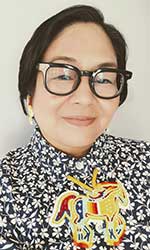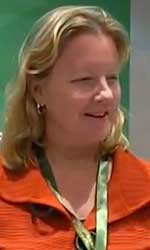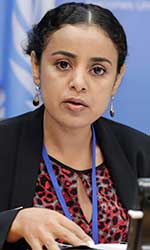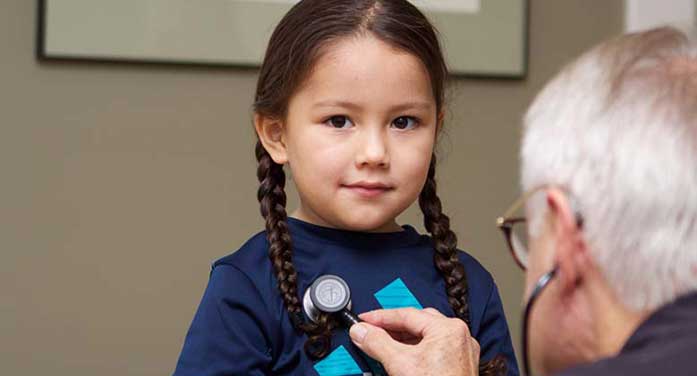When Danika Littlechild was growing up in Maskwacis, Alta., her uncle would pick her up after school and walk her home through the bush to her kôhkom’s (grandmother’s) house. He would show her different plants and fungi along the way, teaching her their names and telling stories about when to harvest and how to use them for medicine.

Danika Littlechild
“Now when I go walking along that same path there’s really nothing but crabgrass left,” Littlechild said. “I can’t take my son on the same path to talk about that fungus because it’s not there.”
That is why Littlechild and dozens of other researchers – Indigenous and non-Indigenous, academic and community-based – are teaming up on a six-year project to curb the decline of biodiversity and improve the health and well-being of Indigenous peoples across Canada and around the world.
“We know Indigenous people’s health and well-being is poor in many parts of the country and internationally, and we also know that biodiversity is declining at an alarming rate. These two trends are interconnected,” said lead co-principal investigator Brenda Parlee, a non-Indigenous scholar and professor in U of A’s Faculty of Agricultural, Life & Environmental Sciences.
“We are working towards Indigenous-led conservation in the spirit and practice of reconciliation in Canada, and that can also be a contribution to humanity as a whole,” said co-principal investigator Littlechild, who is Cree from Ermineskin Cree Nation, assistant professor of law at Carleton University and the first Indigenous woman appointed as vice-president of the Canadian Commission for UNESCO.
The Ărramăt Project brings together more than 150 Indigenous organizations and governments from around the world with researchers at 19 Canadian universities and two Canadian colleges, and 14 international universities. It includes 12 academics from the University of Alberta alone.
They will carry out 140 Indigenous-led, place-based research projects to examine the links between the loss of biodiversity and the decline in Indigenous health. Working in more than 24 countries and speaking more than 30 languages, the team will develop policy roadmaps for practical solutions in 10 areas including strengthening Indigenous food systems and re-establishing healthy relationships to wild species.
In an announcement on Wednesday, the Ărramăt Project was awarded $24 million from the federal government’s New Frontiers in Research Fund, set up to support large-scale, Canadian-led interdisciplinary research projects that address major global challenges.
Along with Parlee and Littlechild, the team of six co-principal investigators includes Mariam Wallet Aboubakrine, Canadian lead for the Association Tinhinan, a non-profit organization founded and led by nomadic women in the Sahel region; Sherry Pictou, a Mi’kmaw woman from L’sɨtkuk, known as Bear River First Nation, N.S., associate professor and Canada Research Chair in Indigenous Governance at Dalhousie University; Murray Humphries, non-Indigenous scholar, Northern Research Chair and director of the Centre for Indigenous Peoples’ Nutrition and Environment at McGill University; and John O’Neil, non-Indigenous scholar and former dean of the Faculty of Health Sciences at Simon Fraser University
‘Ărramăt is a Tuareg word’
The project was framed through more than 300 hours of consultation with Indigenous elders, researchers and leaders from Thailand, Peru, Bolivia, Uganda, Scandinavia, Northern Canada and elsewhere. It builds on the model of Parlee’s previous research project, Tracking Change, which applies traditional knowledge to watershed governance in the Mackenzie River Basin.
Indigenous peoples comprise less than five percent of the world’s population, yet 80 percent of Earth’s biodiversity is located in Indigenous territories. Place-based research starts with an understanding of the inextricable links between territory and Indigenous ways of life, spiritual beliefs, food systems and health, according to Wallet Aboubakrine.

Brenda Parlee
A medical doctor and former chair of the United Nations Permanent Forum on Indigenous Issues, Wallet Aboubakrine was forced at the age of nine to leave Mali due to violence against the Tuareg people of the Sahel and Sahara region. Conflict continues to keep some of her family members away from their homeland and their tradition of raising cows, sheep, goats and camels, and living in leather tents.
“That means that our kids don’t know their land, and this is disrupting the transmission of our values, our culture,” she said. “How can we save our knowledge, our language, our traditional medicine and the way we live in the desert?”
“I see the same thing for my Mon friends from Myanmar who find themselves living on disputed land,” she said. “Unfortunately, even in more developed countries like Canada, my Indigenous relatives have the same questions about how values and knowledge will be transmitted in the future.”
Wallet Aboubakrine hopes to see four Ărramăt research projects undertaken in traditional Tuareg territory, including two focused on traditional medicine: one helping youth soldiers reintegrate through storytelling and traditional knowledge, and one focused on the ecosystem of the Adrar des Ifoghas in the Kidal region of northern Mali.
“Ărramăt is a Tuareg word that captures the state of well-being of the environment and all the other elements of nature – including human beings,” Wallet Aboubakrine explained.
‘If the land is not healthy, how can we be?’
The team sums up their approach with a quote from a Whapmagoostui Cree elder: “If the land is not healthy, how can we be?”
“Indigenous people are documenting, sharing and using their own knowledge to simultaneously address the decline in biodiversity and also improve food security, improve people’s sense of wellness and address issues of social inequity, economic insecurity and lack of access to healing and healthcare services,” Parlee said.
“This really is about making space for Indigenous systems to flourish without needing to be translated or legitimized by other experts,” Littlechild said.
Indigenous ceremonies such as smudging are part of every project meeting, and not just as a symbolic gesture.
“It’s kind of like the use of a gavel in a courtroom,” Littlechild explained. “It’s a call to order that carries with it a certain code of conduct, a sense of solemnity.”
“The research conventions in academia are that research is done to Indigenous people. It’s done about them, not with them or by them,” explained Parlee. “With this project, we are creating opportunities for Indigenous organizations and governments and scholars to do their own work, with others providing supporting roles or being allies in that process.”
“The intention is to reverse the research model and the idea of academia and universities as the only experts.”
‘The environment and human health are strongly interconnected’
Parlee stressed the interdisciplinary approach of the Ărramăt project.

Mariam Wallet Aboubakrine
“We create little silos in academia with natural scientists in this box and health scientists in the other box and social sciences way over there,” she noted. “Those divisions may be useful in academia, but the idea that the environment and human health are strongly interconnected is fundamental to the worldview of many Indigenous peoples.”
There’s a huge appetite to rediscover and learn from Indigenous approaches to managing the environment in the face of climate change and other challenges, she said.
“The collapse of the cod stocks, massive forest fires in B.C., climate change, degradation of fresh water – there’s no end of examples where our non-Indigenous systems of resource management are flawed,” Parlee said. “Through our project we aim to highlight how these losses impact health and well-being and also highlight pathways forward that are socially and ecologically sustainable, particularly for Indigenous peoples.”
For Littlechild, the goals of the project are also personal.
“My bottom line is I don’t want to give up on that path between my family home and my kôhkom’s house,” she said.
“I don’t want to give up on that small place in the world. And I don’t want my son to give up on it either.”
| By Gillian Rutherford
Submitted by the University of Alberta’s Folio online magazine. The University of Alberta is a Troy Media Editorial Content Provider Partner.
© Troy Media
Troy Media is an editorial content provider to media outlets and its own hosted community news outlets across Canada.


